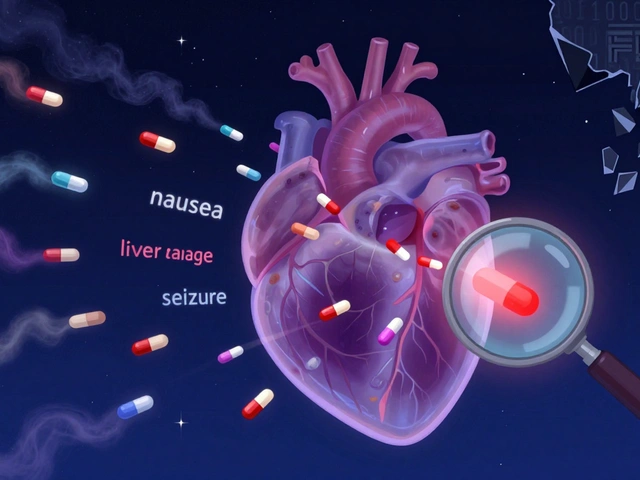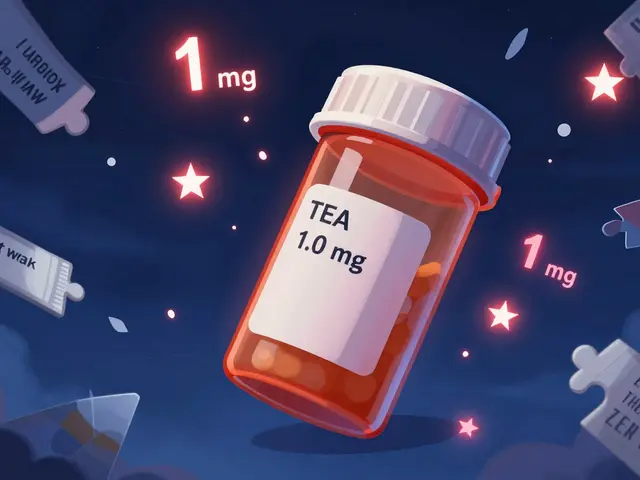Cholesterol medication can cut your risk of heart attack and stroke
If your doctor has told you that lifestyle changes aren't enough, drugs may be the next step. This guide explains common medicines, how they work, side effects to expect, simple monitoring rules, and how to pair meds with diet and exercise.
Which drug might suit you?
The most common group is statins. They lower LDL ("bad") cholesterol by blocking a liver enzyme that makes cholesterol. Statins include atorvastatin, simvastatin, rosuvastatin and others. They work well for most people and have strong evidence for preventing heart attacks. Common side effects are muscle aches and rare liver enzyme changes. If you notice persistent muscle pain or dark urine, call your doctor. Your doctor will usually check a lipid panel and liver tests before starting and after a few weeks.
Ezetimibe blocks cholesterol absorption in the gut and is often added when statins alone don’t hit targets. Bile acid sequestrants such as cholestyramine reduce cholesterol but may cause constipation and can interfere with absorption of other drugs. Fibrates focus on lowering triglycerides and can help when triglycerides are very high. Prescription omega‑3s lower triglycerides too.
PCSK9 inhibitors are newer injectable medicines for people who can't reach LDL goals with pills or who have genetic high cholesterol. They can drop LDL dramatically, but they cost more and need prior authorization in many systems.
Quick safety tips
Drug interactions matter. Some statins interact with antibiotics, antifungals, and certain blood pressure medicines. Grapefruit juice can increase statin levels and risk side effects. Tell your doctor about all prescriptions, over‑the‑counter drugs, and supplements.
Monitoring is simple: expect a lipid panel 6 to 12 weeks after a medication change, then at regular intervals once levels are stable. Liver tests are typically checked at baseline and if symptoms appear. Report unexplained muscle pain or weakness right away.
Lifestyle still counts. Medications work better with a heart‑healthy diet, regular activity, weight control, and quitting smoking. Small swaps — like replacing butter with olive oil or choosing oats instead of sugary cereals — can make a measurable difference.
If cost or access is a problem, ask about generic options, patient assistance programs, or safe pharmacies. Avoid sites that sell prescription drugs without a valid prescription. Bring your current medication list and recent labs to appointments to speed up decisions and get a clear plan that fits your life.
Adherence matters — taking medication regularly makes the difference between reduced risk and wasted opportunity. Set a daily reminder, use a pillbox, or link doses to a routine like brushing teeth. If side effects bother you, don’t stop suddenly; call your provider to adjust dose, swap drugs, or check for interactions. For people planning pregnancy, some cholesterol drugs are not safe; discuss timing and alternatives with your doctor. Older adults may need lower starting doses and closer monitoring. If you have kidney or liver disease, make sure your specialist is involved. Keep an updated list of outcomes and questions for clinic visits.
Vytorin: Uses, Side Effects, Dosage, and How It Works for Cholesterol
Vytorin is a combination medication widely used to treat high cholesterol. This article covers how Vytorin works, who should use it, what side effects might pop up, and tips for safe use. It also explores patient experiences, things to avoid while on the medication, and practical advice for making the most of this cholesterol fighter. Easy language, practical tips, and real insights make it useful whether you’re just curious or considering this drug for yourself.






